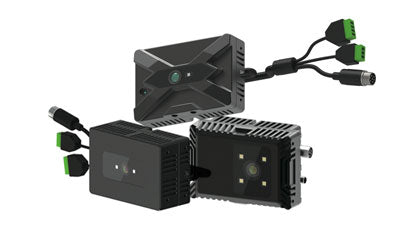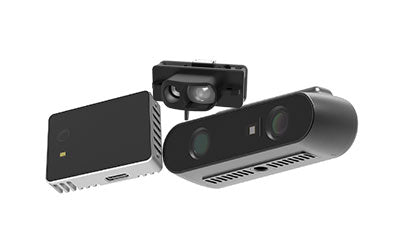How ToF Sensors Enable Green, Efficient, Precise Smart Manufacturing
- 投稿者TofSensor

How can ToF technology help manufacturers achieve energy-efficient and smart production?
As global industries move toward low-carbon, green, and sustainable development, manufacturing enterprises face significant pressure to upgrade equipment, optimize energy consumption, and achieve intelligent transformation. TOF (Time-of-Flight) (ToF) sensors, with their high-precision 3D depth perception, low power consumption, and real-time responsiveness, are gradually becoming a key enabling technology for low-carbon smart manufacturing, providing core solutions for Industry 4.0, automated material handling, and intelligent quality inspection.
What is the low-carbon manufacturing process?
Low-carbon manufacturing is a production approach that focuses on minimizing carbon emissions. By optimizing manufacturing processes, improving energy efficiency, using clean energy, and reducing raw material waste, it aims to minimize the carbon footprint throughout the production cycle.
Key features include:
-
Energy Optimization: Using high-efficiency equipment, intelligent scheduling, and energy management systems to reduce electricity, gas, and other energy consumption.
-
Green Processes: Improving process flows or substituting raw materials to reduce harmful emissions and waste.
-
Intelligent Production: Leveraging IoT, sensors, automation, and AI technologies for real-time monitoring and process optimization, reducing unnecessary energy waste.
-
Recycling and Reuse: Recovering and reusing waste and by-products to improve resource utilization.
Overall, low-carbon manufacturing not only aims for production efficiency and product quality but also emphasizes environmental sustainability, serving as an essential pathway to achieve carbon neutrality and promote green industrial development.
Global Trends in Low-Carbon Manufacturing and Equipment Upgrade Requirements
Against the backdrop of a low-carbon economy and national 'dual-carbon' targets, the manufacturing industry faces unprecedented transformation pressures. Enterprises need to reduce energy consumption and carbon emissions while maintaining production efficiency and product quality. Traditionally, equipment monitoring and measurement rely on 2D vision systems or contact-based measurement tools, which have clear limitations in energy efficiency, precision, and real-time performance.
For example, contact measurements are time-consuming, energy-intensive, and prone to errors due to frequent human intervention, while traditional 2D vision systems struggle to provide accurate detection in complex conditions, making them unsuitable for high-precision, dynamic production lines.
With the development of smart manufacturing and Industry 4.0, ToF sensors and 3D ToF camera modules are emerging as a key technological path for low-carbon manufacturing. By capturing high-precision, real-time 3D depth data in a non-contact manner, ToF technology enables comprehensive monitoring of equipment status, workpiece positions, handling paths, and energy consumption, achieving precise control and intelligent scheduling. For example, in automated guided vehicles (AGVs) and smart production lines, ToF sensors can improve material handling and assembly efficiency while optimizing movement paths and operation cycles, significantly reducing energy consumption and enabling energy-efficient production.
Additionally, integrating ToF technology with automation control systems supports predictive maintenance. By analyzing real-time 3D data, enterprises can identify potential faults in advance, reducing downtime and maintenance costs, and further improving production efficiency and resource utilization.
Overall, the trend toward low-carbon manufacturing drives enterprises not only to upgrade production equipment but also to adopt high-precision, real-time intelligent sensing technologies to achieve the combined goals of energy savings, process optimization, and green production. As ToF technology continues to develop and costs decrease, its application in smart factories, robotic handling, energy management, and green manufacturing is expected to expand further, becoming a core driver of industrial low-carbon transformation.
Core Applications of ToF in Low-Carbon Smart Manufacturing
As smart manufacturing and the low-carbon economy advance, manufacturing enterprises not only pursue production efficiency but also emphasize energy conservation and green processes. ToF sensors and 3D camera modules, with their non-contact, high-precision, real-time depth sensing capabilities, are becoming critical technologies in low-carbon smart manufacturing. They are widely applied in energy monitoring, equipment supervision, automated logistics, and intelligent quality inspection.
1. Energy Monitoring and Consumption Optimization
ToF depth sensing technology allows real-time monitoring of production equipment and energy consumption, providing data support for energy-saving and intelligent scheduling:
-
Equipment Motion Recognition: By generating high-precision 3D point clouds, equipment movements can be monitored in real-time to identify idle or inefficient operations, avoiding unnecessary energy consumption.
-
Production Line Energy Analysis: Combined with AI algorithms and historical data, energy consumption of each process can be accurately calculated, enabling demand-based scheduling and process optimization, significantly reducing energy waste.
-
Predictive Maintenance: Monitoring minor wear or abnormal motion of mechanical components allows early fault warnings, minimizing energy waste and production delays caused by unexpected downtime.
This application not only improves production efficiency but also provides technical support for achieving carbon reduction targets.
2. Equipment Monitoring and Quality Control
In quality control, ToF 3D cameras and sensing modules enable high-precision, non-contact inspection, replacing traditional manual or 2D inspection methods:
-
Workpiece Dimension Measurement: Millimeter-level depth data allows precise measurement of product dimensions, ensuring part assembly accuracy and overall pass rates.
-
Defect Detection and Inspection: Combined with AI image recognition, surface cracks, scratches, dents, or assembly deviations can be quickly detected, reducing rework and improving yield.
-
Real-Time Monitoring: Continuous acquisition of 3D point cloud data supports online inspection and dynamic adjustments, ensuring high-quality output throughout the production process.
This approach effectively reduces resource waste caused by defective products or nonconforming processes, enhancing the level of green manufacturing.
3. Automated Material Handling and Logistics
In smart factories and modern warehouse logistics, ToF sensors serve as the core perception devices for automated guided vehicles (AGVs) and automated logistics systems:
-
Obstacle Avoidance and Path Planning: By detecting surrounding obstacles and dynamic environments, AGVs can achieve safe navigation and efficient route planning.
-
Spatial Awareness: ToF depth data can be used to build 3D maps of warehouses or production areas, enabling precise positioning and task planning.
-
Collaborative Operations: Multiple AGVs can share real-time depth data for coordinated material handling, goods sorting, and inventory management, improving logistics efficiency and reducing energy consumption.
Through intelligent scheduling and environmental perception, enterprises can significantly reduce energy use in logistics, achieving green warehousing and production.
4. Intelligent Quality Inspection and Automated Production
By combining ToF sensors, 3D camera modules, and AI algorithms, production lines can achieve intelligent quality inspection and full automation:
-
Automated Surface Inspection: Quickly detect surface defects and imperfections, replacing manual inspection and improving efficiency and accuracy.
-
Precise Assembly Measurement: Measure gaps between components in real time, ensuring assembly quality and process consistency.
-
3D Quality Report Generation: Use depth data to rapidly generate comprehensive 3D quality reports, providing scientific support for production management and process improvement.
These applications not only enhance production efficiency but also promote green manufacturing, reducing energy and material consumption and supporting low-carbon production goals.
Technical Challenges: Power Consumption, Lifespan, and Modular Design
Although ToF technology is widely applied in low-carbon smart manufacturing, it still faces several technical challenges in industrial deployment, requiring systematic solutions:
-
Power Consumption: High frame rates, high precision, and continuous operation of ToF sensors, especially on large-scale production lines or AGVs, can result in significant energy use. This not only increases operating costs but also conflicts with low-carbon manufacturing goals.
-
System Lifespan: Industrial environments often involve dust, temperature fluctuations, humidity changes, and mechanical vibrations, all of which can accelerate ToF module aging or degrade performance, affecting long-term stability and reliability.
-
Modularity and Compatibility: Different manufacturers’ 3D ToF sensors vary in interfaces, data protocols, sampling rates, and driver methods, complicating system integration and future expansion. A lack of standardized protocols can increase upgrade and maintenance costs, limiting the flexibility of smart manufacturing systems.
To address these challenges, the industry has adopted several optimization strategies:
-
Low-Power Design: Using VCSEL (Vertical-Cavity Surface-Emitting Laser) low-power emitters and optimized SPAD (Single-Photon Avalanche Diode) receivers to reduce energy consumption while maintaining high-precision measurements.
-
Intelligent Algorithm Optimization: Combining AI and edge computing to process point cloud data in real time, reducing sensor power consumption while preserving accuracy and extending module lifespan.
-
Modular Design and Standardized Interfaces: Implementing unified data protocols, plug-and-play modules, and standardized interfaces to enable rapid replacement, upgrades, and system expansion, supporting multi-brand and multi-model integration.
With these technical improvements, ToF modules can operate reliably in industrial environments, improve energy efficiency, and provide robust support for low-carbon smart manufacturing, while enabling enterprises to build flexible and scalable intelligent factories.
Recommendations for Manufacturers and Equipment Suppliers
-
Plan for Green Manufacturing Transformation: Optimize production processes and reduce energy consumption by integrating ToF sensors with industrial automation sensing technologies.
-
Select Mature ToF Products: Consider established 3D ToF sensors and camera modules from providers like STMicroelectronics, Infineon, and TI.
-
AI + ToF Depth Perception: Leverage AI algorithms to enhance detection accuracy, enabling predictive maintenance and intelligent decision-making.
-
5G Industrial Connectivity: Use 5G networks for device interconnection and high-speed data transmission, supporting real-time monitoring in smart factories.
Outlook: AI + ToF + 5G for Intelligent, Lightweight Workshops
In the future, low-carbon smart manufacturing will rely on the deep integration of AI, ToF, and 5G:
-
Precise 3D Perception with ToF sensors
-
Real-Time Data Analysis and Intelligent Decision-Making with AI algorithms
-
Interconnected Production Units via 5G networks
By combining these technologies, enterprises can create energy-efficient, high-performance, green, and intelligent workshops, achieving a comprehensive upgrade from traditional industrial operations to digital, low-carbon, and smart manufacturing.
Synexens Industrial Outdoor 4m TOF Sensor Depth 3D Camera Rangefinder_CS40p
After-sales Support:
Our professional technical team specializing in 3D camera ranging is ready to assist you at any time. Whether you encounter any issues with your TOF camera after purchase or need clarification on TOF technology, feel free to contact us anytime. We are committed to providing high-quality technical after-sales service and user experience, ensuring your peace of mind in both shopping and using our products.
-
で掲示されます
CS40P






